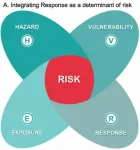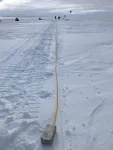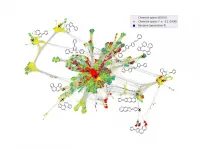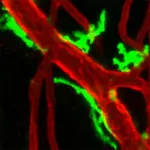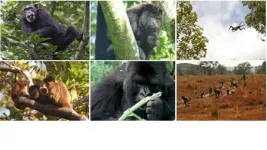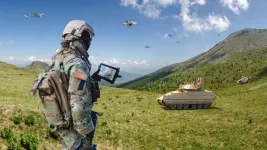(Press-News.org) A team of researchers from the Africa Climate and Development Initiative (ACDI) led a global team of 21 climate risk scholars to better understand and inform decision making around climate change risks in Africa and globally by examining how the drivers of risk interact.
Their work extends on existing risk frameworks with the hope that this research could help decision makers, managers and researchers understand the inherent complexity of climate change.
"Understanding the interactions among risks holds potential to change the way we respond to the risks. This is important because policy makers may worry about the risk of implementing a response as much, or more so, than the risk the response aims to reduce. This can lead to inaction at the very time when we need to be most active and investing heavily in our response to climate change," said Dr Nick Simpson, lead author of the paper published in One Earth, and postdoctoral fellow at the ACDI based at the University of Cape Town (UCT).
Two important responses to climate change - adaptation and mitigation - are often not considered as part of climate risk assessment. In the article, the team, extends the existing risk framework used by the Intergovernmental Panel on Climate Change (IPCC) by including response options, identifying multiple interactions of drivers of risk, and risk interactions in risk assessment.
Across the suite of terms that have been applied to climate change risk for human and natural systems, there is a commonality: an interaction or aggregation of the determinants of risk (hazard, exposure, vulnerability), and of multiple risks. The researchers expand on this by explicitly recognising that a response to climate change can also be a driver of risk as shown in the diagram below.
For example, biological responses to heatwaves can create faster than normal soil moisture depletion known as a 'false spring' as a response to unusual early season growth increasing risk of wildfire and compound conditions of extreme heat (hazard), duration of heatwave (exposure) and increased fuel load (vulnerability).
Yet, response has been generally considered separately or secondarily to interactions between hazards, exposures and vulnerabilities. As a result, response is considered for how it can manage or reduce risk rather than how it might also create risk. But response should be at the centre of climate risk assessment and management.
Simpson highlighted the importance of this innovation: "If human and biological response to climate change was better integrated with conceptualisation of risk, its assessment would be more policy relevant and better reflect real-world decision making around risk," he said.
The framework goes on to identify two more categories of complex climate change risk and highlights the importance of also considering the interactions of the multiple drivers of risk and interactions between risks themselves. This is particularly important in the African context where there is unique vulnerability and exposure challenges for particular populations and is well illustrated by the interactions of risks during the Cape Town drought.
Effective responses to the drought were delayed due to the political risk of declaring a disaster and a lack of feasible water supply alternatives. Responses became increasingly urgent in early 2018 as the potential of a 'Day Zero' event became possible, the point at which a city of four million people might run out of water. The risk of 'Day Zero' was anticipated to cascade to affect risks to health, economic output and security and responses by different groups interacted to generate risks to municipal finance.
Considering interactions among these multiple risk and risk drivers is important as it shifts risk assessment from a concentration on individual climate hazards or interactions of hazards as a single 'event', such as a drought or flood, to situate that climate hazard within a set of multiple events interacting continuously with evolving social and economic conditions.
Access the full study: Simpson, N.P., et al. (2021). Assessing and responding to complex climate change risks, One Earth. DOI https://doi.org/10.1016/j.oneear.2021.03.005.
INFORMATION:
A Southern California high school junior has built a low-cost seismometer device that delivers earthquake early warnings for homes and businesses. Costing less than $100 for her to make today, the seismometer could someday be a regular household safety device akin to a smart smoke detector, says its inventor Vivien He.
About the size of a Rubik's cube and encased in clear acrylic, the seismometer has a sleek, consumer-ready look. The device's geophone detects incoming ground motion, while onboard hardware and software translate the geophone's electrical signals into a digital waveform. The device has detected all earthquakes over magnitude 3.0 around Los Angeles since September 2020.
When ...
At the Seismological Society of America's 2021 Annual Meeting, researchers shared how they are using fiber optic cable to detect the small earthquakes that occur in ice in Antarctica.
The results could be used to better understand the movement and deformation of the ice under changing climate conditions, as well as improve future monitoring of carbon capture and storage projects, said Anna Stork, a geophysicist at Silixa Ltd.
Stork discussed how she and her colleagues are refining their methods of distributed acoustic sensing, or DAS, for microseismicity--earthquakes too small to be felt. DAS works by using the tiny internal flaws within an optical fiber as thousands of seismic ...
A deep spatiotemporal neural network trained on more than 36,000 earthquakes offers a new way of quickly predicting ground shaking intensity once an earthquake is underway, researchers report at the Seismological Society of America (SSA)'s 2021 Annual Meeting.
DeepShake analyzes seismic signals in real time and issues advanced warning of strong shaking based on the characteristics of the earliest detected waves from an earthquake.
DeepShake was developed by Daniel J. Wu, Avoy Datta, Weiqiang Zhu and William Ellsworth at Stanford University.
The earthquake data used to train ...
The SEIS seismometer package from the Mars InSight lander has collected its first continuous Martian year of data, revealing some surprises among the more than 500 marsquakes detected so far.
At the Seismological Society of America (SSA)'s 2021 Annual Meeting, Savas Ceylan of ETH Zürich discussed some of the findings from The Marsquake Service, the part of the InSight ground team that detects marsquakes and curates the planet's seismicity catalog.
Marsquakes differ from earthquakes in a number of ways, Ceylan explained. To begin with, they ...
How can I prepare myself for something I do not yet know? Scientists from the Fritz Haber Institute in Berlin and from the Technical University of Munich have addressed this almost philosophical question in the context of machine learning. Learning is no more than drawing on prior experience. In order to deal with a new situation, one needs to have dealt with roughly similar situations before. In machine learning, this correspondingly means that a learning algorithm needs to have been exposed to roughly similar data. But what can we do if there is a nearly infinite amount of possibilities so that it is simply impossible to generate data ...
Cardiovascular disease, the most common cause of death, is the result of oxygen deprivation as blood perfusion to affected tissue is prevented. To halt the development of the disease and to promote healing, re-establishment of blood flow is crucial. Researchers at Uppsala University have now discovered that one of the most common immune cells in the human body, macrophages, play an important role in re-establishing and controlling blood flow, something that can be used to develop new drugs.
The classic function of immune cells is to defend the body against attacks from microorganisms and tumour cells. Macrophages are immune cells specialised in killing and consuming microorganisms but they have ...
How primates get from A to B gives vital information about their cognitive evolution, say researchers in a new study looking at the travel paths of animals in the wild. Using data from 164 wild primate populations, the global survey examines the mental abilities that primates, including ourselves, use to know where and when to travel in the most efficient way.
A birds eye view
Co-author Miguel de Guinea, expert in Evolutionary Anthropology at Oxford Brookes University commented: "Imagine looking down on a huge outdoor market from high in the sky, perhaps from a drone hovering quietly above. The people below move in different ways. Some wander haphazardly among the stalls: they are learning what's available but are clearly not busy. Others take bee-line routes ...
In celebration of the 31st anniversary of the launching of NASA's Hubble Space Telescope, astronomers aimed the renowned observatory at a brilliant "celebrity star," one of the brightest stars seen in our galaxy, surrounded by a glowing halo of gas and dust.
The price for the monster star's opulence is "living on the edge." The star, called AG Carinae, is waging a tug-of-war between gravity and radiation to avoid self-destruction.
The expanding shell of gas and dust that surrounds the star is about five light-years wide, which equals the distance from here to the nearest star beyond the Sun, Proxima Centauri.
The huge ...
Now that teens and young adults across the country account for an increasing share of COVID-19 cases, and many have become eligible for vaccination, several recently published studies based on polls of this age group provide insights into the kinds of messaging that might work best for both preventing transmission and vaccine uptake.
Using data from text-message polls of people between the ages of 14 and 24 taken at several points in 2020, researchers from the University of Michigan find a clear theme: that most young people are taking COVID-19 seriously and trying to follow public health guidance, and that many of them they are motivated by the desire to protect ...
ABERDEEN PROVING GROUND, Md. -- Army and Arizona State University researchers identified a set of approaches to help scientists assess how well autonomous systems and humans communicate.
These approaches build on transformational scientific research efforts led by the Army's Robotics Collaborative Technology Alliance, which evolved the state of robots from tools to teammates and laid the foundation for much of the service's existing research into how humans and robots can work together effectively.
As ideas for autonomous systems evolve, and the possibilities ...
